Powder Coating
Powder coating is a dry coating process where electrostatic powder is applied to the surface of a workpiece and then cured under high heat to form a hard and durable coating. This technique is widely used in metal product surface treatment to enhance durability and aesthetics. Here is a detailed introduction to powder coating:
The Powder Coating Process
- Pre-treatment: Clean and treat the workpiece, such as degreasing, derusting, and phosphating, to ensure adhesion and uniformity of the powder coating.
- Electrostatic Spraying: Use an electrostatic spray gun to evenly apply the charged powder coating to the workpiece surface. The electrostatic force ensures the powder adheres firmly to the workpiece.
- Curing: The coated workpiece is baked in an oven at high temperatures, causing the powder to melt and form a smooth, hard coating.
Benefits of Powder Coating
- High Durability: The resulting coating is hard and durable, with excellent abrasion and corrosion resistance.
- Environmental Friendliness: Free of volatile organic compounds (VOCs), making it environmentally friendly.
- Rich Color Options: Powder coatings offer a wide range of colors and textures to meet various design needs.
- High Efficiency: The electrostatic spraying technique is efficient, providing uniform coating with minimal waste.
Applications of Powder Coating
- Home Appliances: Surface treatment for the exterior of refrigerators, washing machines, and more.
- Automotive Industry: Used for automotive parts and body coatings.
- Building Materials: Surface treatment for aluminum alloy doors, windows, and metal structures.
- Furniture Manufacturing: Applied to metal furniture for surface coating.
Application in Your Business
Sheng Bang Steel Co., Ltd. can leverage powder coating technology to provide high-quality surface treatment services for clients, enhancing the durability and appearance of products. This will help the company compete in the market and attract customers with high demands for product quality and environmental friendliness.
Electroplating
Electroplating not only enhances the appearance of metal parts but also extends their service life. Electroplating is an electrolytic reduction reaction. Metal parts that need to be electroplated are immersed in an electrolyte solution. After electrification, metal molecules on the electrolyte solution gradually adhere to the metal parts. After a period of time, a thin layer of metal molecules naturally forms on the surface of the metal parts.
Polishing
Polishing is a process that uses physical or chemical means to treat the surface of metals or other materials to achieve a smooth and shiny finish. Polishing enhances the aesthetic quality of the material and can improve its corrosion resistance and wear resistance to some extent. Here is a detailed introduction to polishing:
The Polishing Process
- Rough Grinding: Use coarse abrasives to perform initial grinding on the workpiece surface, removing the oxide layer, burrs, and other defects.
- Intermediate Grinding: Use medium-grit abrasives for further grinding to eliminate scratches left by rough grinding, making the surface smoother.
- Fine Grinding: Use fine abrasives for precise grinding to achieve an even smoother surface.
- Polishing: Use polishing compounds and polishing wheels for the final treatment, achieving a mirror-like finish on the surface.
Benefits of Polishing
- Improved Surface Gloss: The polished surface is bright and reflective, enhancing the material’s appearance.
- Enhanced Surface Quality: Removes surface defects, making the workpiece smoother and more even.
- Increased Corrosion Resistance: Polishing reduces surface roughness, decreasing the adhesion of corrosive media, thereby improving corrosion resistance.
- Increased Wear Resistance: A smooth surface reduces friction, increasing the material’s wear resistance.
Applications of Polishing
- Automotive Industry: Used for surface treatment of automotive parts, such as body panels, rims, and exhaust pipes.
- Electronics Industry: Polishing electronic product housings and components to improve aesthetic quality.
- Furniture Manufacturing: Polishing metal furniture and decorative items to enhance their appearance.
- Medical Instruments: Polishing medical instruments to ensure a smooth and sterile surface.
Application in Your Business
Sheng Bang Steel Co., Ltd. can leverage polishing technology to provide high-quality surface treatment services for clients, enhancing the appearance and performance of products. This will help the company compete in the market and attract customers with high demands for product quality and appearance.
Hairline Finishing
Hairline finishing is a metal surface treatment technique that creates fine, elongated linear textures on the surface of metals, resembling hair-like patterns. This treatment not only enhances the aesthetic quality of the metal but also increases its wear resistance and fingerprint resistance. Here is a detailed introduction to hairline finishing:
The Hairline Finishing Process
- Pre-treatment: Clean and degrease the metal surface to ensure it is free of impurities, preparing it for the hairline treatment.
- Hairline Treatment: Use a specialized hairline machine or abrasives to polish the metal surface in a specific direction, creating uniform, elongated textures.
- Post-treatment: After the hairline treatment, clean and protect the metal surface to prevent oxidation and contamination.
Benefits of Hairline Finishing
- Aesthetic Appeal: Hairline finishing gives the metal surface a unique texture and aesthetic appeal, commonly used in products with high decorative requirements.
- Fingerprint Resistance: The hairline texture effectively reduces fingerprint marks, keeping the surface cleaner.
- Wear Resistance: The elongated texture increases the metal surface’s wear resistance, extending the product’s lifespan.
- Ease of Cleaning: Hairline finished surfaces are easy to clean, suitable for products that require frequent maintenance.
Applications of Hairline Finishing
- Architectural Decoration: Used in building facades, elevator doors, and interior decorations, enhancing the building’s texture and aesthetic.
- Home Appliances: Applied to the housings of refrigerators, microwaves, and other appliances, enhancing their appearance and durability.
- Furniture Manufacturing: Surface treatment for metal furniture, increasing its decorative appeal and wear resistance.
- Automotive Industry: Used for both interior and exterior car parts, such as dashboards and door handles, improving product texture and aesthetics.
Application in Your Business
Sheng Bang Steel Co., Ltd. can leverage hairline finishing technology to provide high-quality metal surface treatment services for clients, enhancing product appearance and performance. This will help the company compete in the market and attract customers with high demands for product quality and appearance.
Titanium Plating
Titanium plating is a technique where a layer of titanium or titanium alloy is electroplated onto the surface of metals or other substrates. This technology not only enhances the substrate’s corrosion resistance, wear resistance, and hardness but also provides unique aesthetic effects. Here is a detailed introduction to titanium plating:
The Titanium Plating Process
- Surface Preparation: Clean and degrease the substrate surface to ensure it is free of oxide layers and impurities, typically followed by acid cleaning and activation.
- Titanium Electroplating: Place the substrate into an electrolyte solution containing titanium compounds and use an electric current to deposit titanium ions onto the substrate surface, forming a uniform titanium layer.
- Post-treatment: After electroplating, clean and passivate the plated layer to enhance its corrosion and wear resistance.
Benefits of Titanium Plating
- Corrosion Resistance: Titanium plating offers excellent corrosion resistance, suitable for use in harsh environments.
- High Hardness: Titanium plating significantly increases the surface hardness of the substrate, enhancing its wear resistance.
- Aesthetic Appeal: Titanium plating can provide different colors and gloss, improving the product’s appearance.
- Biocompatibility: Titanium is harmless to the human body, making it suitable for medical devices and implants.
Applications of Titanium Plating
- Aerospace: Used in aircraft and spacecraft components to enhance their wear and corrosion resistance.
- Medical Devices: Widely used in medical devices and implants, such as artificial joints and bone screws, due to its biocompatibility and corrosion resistance.
- Jewelry Manufacturing: Creating high-quality titanium alloy jewelry, known for its aesthetic and durability.
- Automotive Industry: Used in automotive components, such as exhaust pipes and engine parts, to increase their durability and aesthetics.
Application in Your Business
Sheng Bang Steel Co., Ltd. can leverage titanium plating technology to provide clients with high-performance and aesthetically pleasing metal surface treatment services. This will help the company compete in the market and attract customers with high demands for product performance and appearance.
Anodizing Processing
Anodizing processing is an electrochemical process used to form an oxide layer on the surface of metals, commonly applied to aluminum and its alloys. This process not only enhances the corrosion and wear resistance of the material but also increases its surface hardness and aesthetics. Here is a detailed introduction to anodizing processing:
The Anodizing Process
- Pre-treatment: Clean the metal surface to remove oil, dust, and other impurities to ensure the uniformity and adhesion of the oxide layer.
- Anodizing: Place the metal workpiece in an electrolyte solution and apply current to form the oxide layer. Sulfuric acid solution is commonly used as the electrolyte.
- Coloring (optional): After forming the oxide layer, the workpiece can be dyed to achieve aesthetic effects by immersing it in a dye solution.
- Sealing: Seal the micro-pores in the oxide layer to enhance its corrosion resistance and stability. Sealing can be done by immersing the workpiece in hot water or a chemical solution.
Benefits of Anodizing
- Improved Corrosion Resistance: The oxide layer effectively protects the metal substrate from corrosion.
- Enhanced Hardness and Wear Resistance: The oxide layer is hard, significantly improving the wear resistance of the metal surface.
- Aesthetic Improvement: Dyeing and sealing techniques can achieve various colors and surface textures, enhancing aesthetics.
- Insulating Properties: The oxide layer has good electrical insulation properties, making it suitable for applications requiring electrical insulation.
Applications of Anodizing
- Aerospace Industry: Used in aircraft components to enhance corrosion resistance and hardness.
- Automotive Industry: Applied to car bodies and interior parts to improve durability and aesthetics.
- Electronic Products: Used on electronic device housings for protection and decorative effects.
- Architecture and Decoration: Used in construction materials and decorative items to enhance durability and aesthetics.
Application in Your Business
Sheng Bang Steel Co., Ltd. can leverage anodizing technology to provide high-quality surface treatment services for aluminum products, enhancing their durability and aesthetics. This will help expand the market and attract customers who demand high product quality and appearance.


